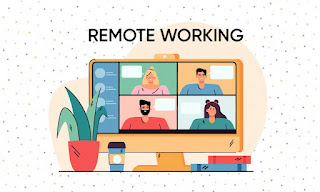His theory looks at how various innovations are adopted into society. The theory divides the population into different groups, such as innovators, early adopters, early majority, late majority and laggards. This provides a timeline for how these products, ideals, and behaviors are slowly implemented into society.
In my case, I researched how remote work and platforms like Zoom have become an integral aspect of our world. First, I would suggest that the COVID-19 pandemic sparked the catalyst for the adoption of working from home. While before March 2020, remote work was often seen as a perk. It was earned because it relies on flexibility and trust between the employer and employee. Many companies did not offer this type of job because they feared productivity and collaboration would suffer.
However, the pandemic created a world were working from home was the “new normal”. Overnight offices and school closed, and people quarantined for their safety. Suddenly, it seemed like adults and children alike were utilizing Zoom and online conference services.
Rogers describes five characteristics that are elements to adopting an innovation, as well as remote work. These include compatibility, trialability, relative advantage, observability and complexity. Working from home was extremely compatible because it fit people's new need for social distancing. It also fit trialability and complexity because Zoom’s free version allowed for the platform to be accessible to all. Zoom encouraged people to use the service for work conferences and socialization. Lastly, the benefits of the products were noticeable because everyone was using it.
The impacts of working from home allowed for it to be adopted into everyday life. As the world began to recover from the pandemic, more companies embraced hybrid and remote models. Flexibility is becoming a key-component and led to the re-thinking of a work-life balance. In addition, the measures of success in the workplace are transitioning from going to meetings and visibility. Instead, outcomes and results are being judged, encouraging quality work.
However, the cultural shift to remote work also has negative consequences. Issues of isolation may increase, and collaboration may suffer when using Zoom. Nevertheless, remote work demonstrates how innovation diffuses through society and reshapes how we live.




No comments:
Post a Comment